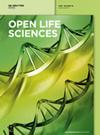二甲双胍通过调节 PI3K/AKT/mTOR 信号通路和增强软骨细胞自噬作用缓解骨关节炎的进展
IF 1.7
4区 生物学
Q3 BIOLOGY
引用次数: 0
摘要
骨关节炎(OA)是一种慢性退行性疾病,其特点是关节组织整体受损。二甲双胍(Met)已被证明能抑制炎症反应,但其对软骨的潜在保护机制仍不清楚。本研究调查了二甲双胍在 OA 大鼠模型中保护软骨的潜力。研究人员进行了各种形态学实验,以评估 Met 治疗前后软骨组织形态的变化。使用 Western 印迹、免疫组化染色和 RT-qPCR 测量了软骨特异性基因的蛋白质和 mRNA 水平。此外,还测定了自噬相关蛋白和 mTOR 通路相关蛋白的水平。结果表明,手术后软骨细胞的合成和降解代谢失衡,细胞自噬功能下调,PI3K/Akt/mTOR 通路被激活。然而,用 Met 治疗可上调合成代谢因子的表达,表明它有助于软骨修复。此外,对自噬和通路蛋白水平的分析表明,Met能有效减轻骨关节炎软骨细胞的自噬损伤和PI3K/Akt/mTOR通路的异常激活。综上所述,Met能抑制软骨组织中PI3K/AKT/mTOR信号通路的异常激活,促进软骨细胞自噬功能的恢复,改善软骨细胞合成和降解代谢的平衡,从而对大鼠关节软骨起到保护作用。本文章由计算机程序翻译,如有差异,请以英文原文为准。
Metformin mitigates osteoarthritis progression by modulating the PI3K/AKT/mTOR signaling pathway and enhancing chondrocyte autophagy
Osteoarthritis (OA) is a chronic degenerative disease characterized by overall joint tissue damage. Metformin (Met) has been shown to inhibit inflammatory reactions, though its potential protective mechanism on cartilage remains unclear. This study investigated Met’s potential to protect cartilage in an OA rat model. Various morphological experiments were conducted to assess changes in cartilage tissue morphology before and after Met treatment. Protein and mRNA levels of cartilage-specific genes were measured using western blot, immunohistochemical staining, and RT-qPCR. Additionally, protein levels of autophagy-related and mTOR pathway-related proteins were measured. The results indicate an imbalance in the synthesis and degradation metabolism of chondrocytes, downregulation of cellular autophagy, and activation of the PI3K/Akt/mTOR pathway after surgery. However, treatment with Met could upregulate the expression of synthetic metabolic factors, indicating its contribution to cartilage repair. Furthermore, analysis of autophagy and pathway protein levels indicated that Met effectively attenuated autophagic damage to osteoarthritic cartilage cells and abnormal activation of the PI3K/Akt/mTOR pathway. In conclusion, Met can inhibit the abnormal activation of the PI3K/AKT/mTOR signaling pathway in cartilage tissue, promote the restoration of cartilage cell autophagic function, improve the balance of cartilage cell synthesis and degradation metabolism, and thus exert a protective effect on rat joint cartilage.
求助全文
通过发布文献求助,成功后即可免费获取论文全文。
去求助
来源期刊

Open Life Sciences
BIOLOGY-
CiteScore
2.50
自引率
4.50%
发文量
131
审稿时长
43 weeks
期刊介绍:
Open Life Sciences (previously Central European Journal of Biology) is a fast growing peer-reviewed journal, devoted to scholarly research in all areas of life sciences, such as molecular biology, plant science, biotechnology, cell biology, biochemistry, biophysics, microbiology and virology, ecology, differentiation and development, genetics and many others. Open Life Sciences assures top quality of published data through critical peer review and editorial involvement throughout the whole publication process. Thanks to the Open Access model of publishing, it also offers unrestricted access to published articles for all users.
 求助内容:
求助内容: 应助结果提醒方式:
应助结果提醒方式:


